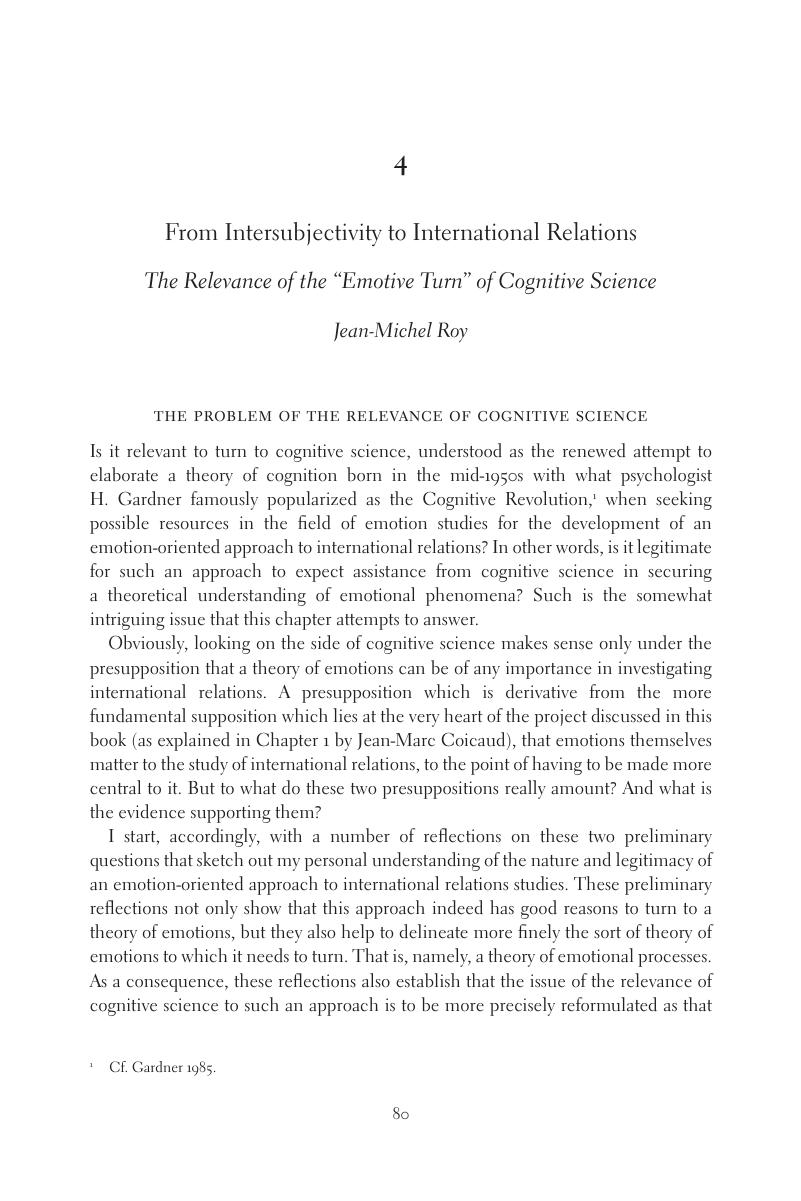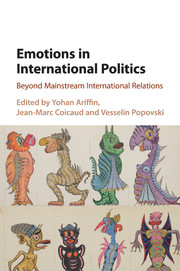Book contents
- Emotions in International Politics
- Emotions in International Politics
- Copyright page
- Contents
- Notes on Contributors
- Foreword
- Book part
- Introduction
- Part I Towards an Interdisciplinary Analysis of Emotions in International Politics
- 1 The Question of Emotions and Passions in Mainstream International Relations, and Beyond
- 2 Emotion and Change: Where History Comes In
- 3 The Sociology of Face-to-Face Emotions
- 4 From Intersubjectivity to International Relations
- 5 Emotions of Uncertainty, Competition and Cooperation in the International Financial Sector
- 6 Exploring the Nexus of Emotions/Passions, Values and Rights in International Affairs
- 7 Psychoanalysis and the Study of Emotions in International Politics
- 8 Emotions and International Law
- Part II Emotions in Foreign Policy Decision Making and in War and Peace
- Conclusion
- Index
- References
4 - From Intersubjectivity to International Relations
The Relevance of the “Emotive Turn” of Cognitive Science
from Part I - Towards an Interdisciplinary Analysis of Emotions in International Politics
Published online by Cambridge University Press: 05 December 2015
- Emotions in International Politics
- Emotions in International Politics
- Copyright page
- Contents
- Notes on Contributors
- Foreword
- Book part
- Introduction
- Part I Towards an Interdisciplinary Analysis of Emotions in International Politics
- 1 The Question of Emotions and Passions in Mainstream International Relations, and Beyond
- 2 Emotion and Change: Where History Comes In
- 3 The Sociology of Face-to-Face Emotions
- 4 From Intersubjectivity to International Relations
- 5 Emotions of Uncertainty, Competition and Cooperation in the International Financial Sector
- 6 Exploring the Nexus of Emotions/Passions, Values and Rights in International Affairs
- 7 Psychoanalysis and the Study of Emotions in International Politics
- 8 Emotions and International Law
- Part II Emotions in Foreign Policy Decision Making and in War and Peace
- Conclusion
- Index
- References
Summary

- Type
- Chapter
- Information
- Emotions in International PoliticsBeyond Mainstream International Relations, pp. 80 - 111Publisher: Cambridge University PressPrint publication year: 2016
References
- 2
- Cited by



